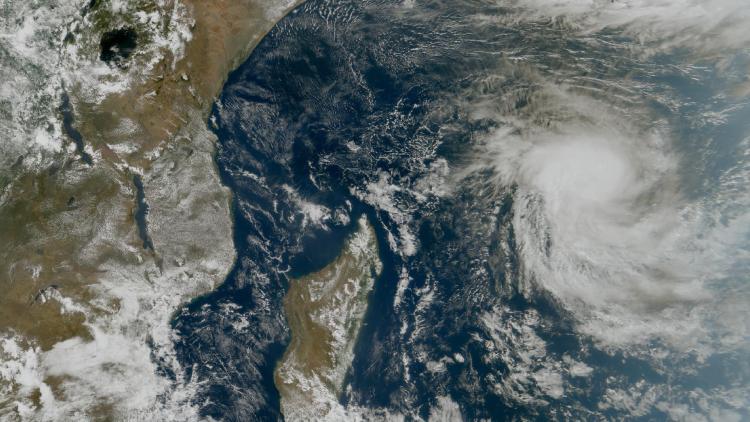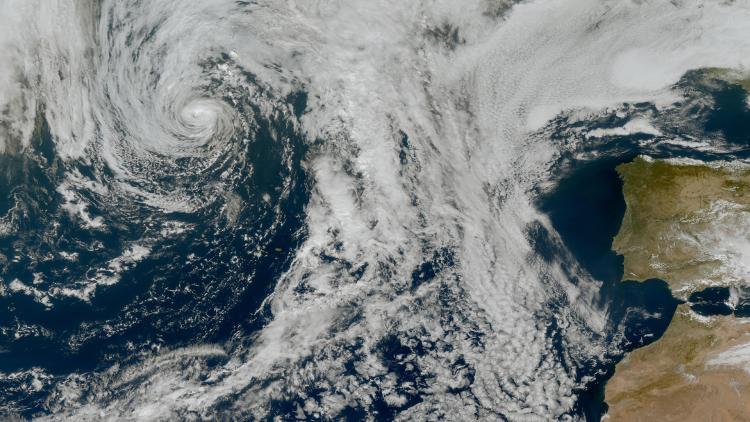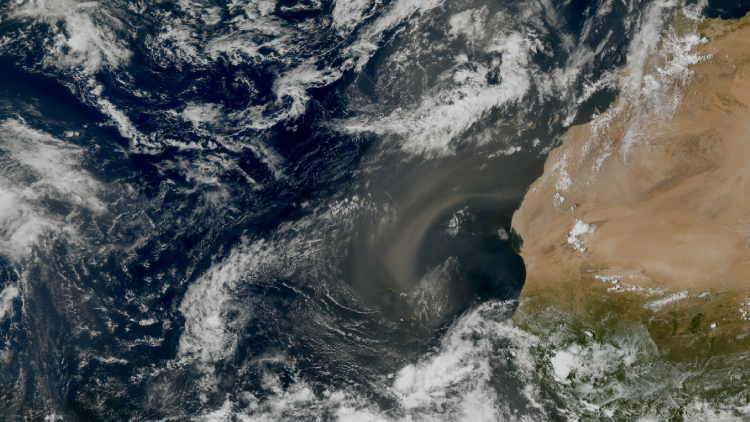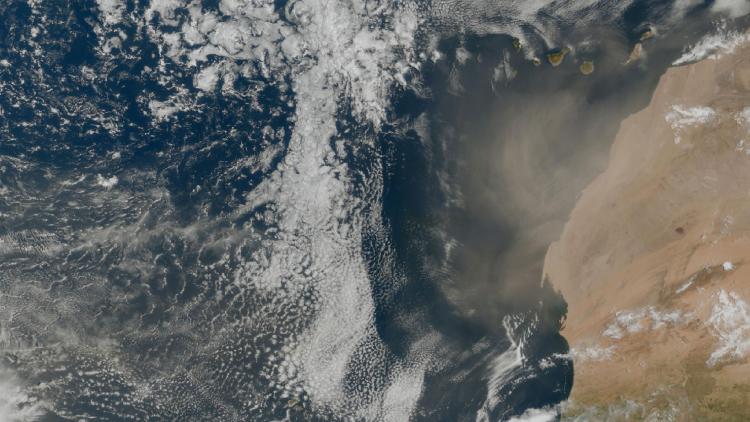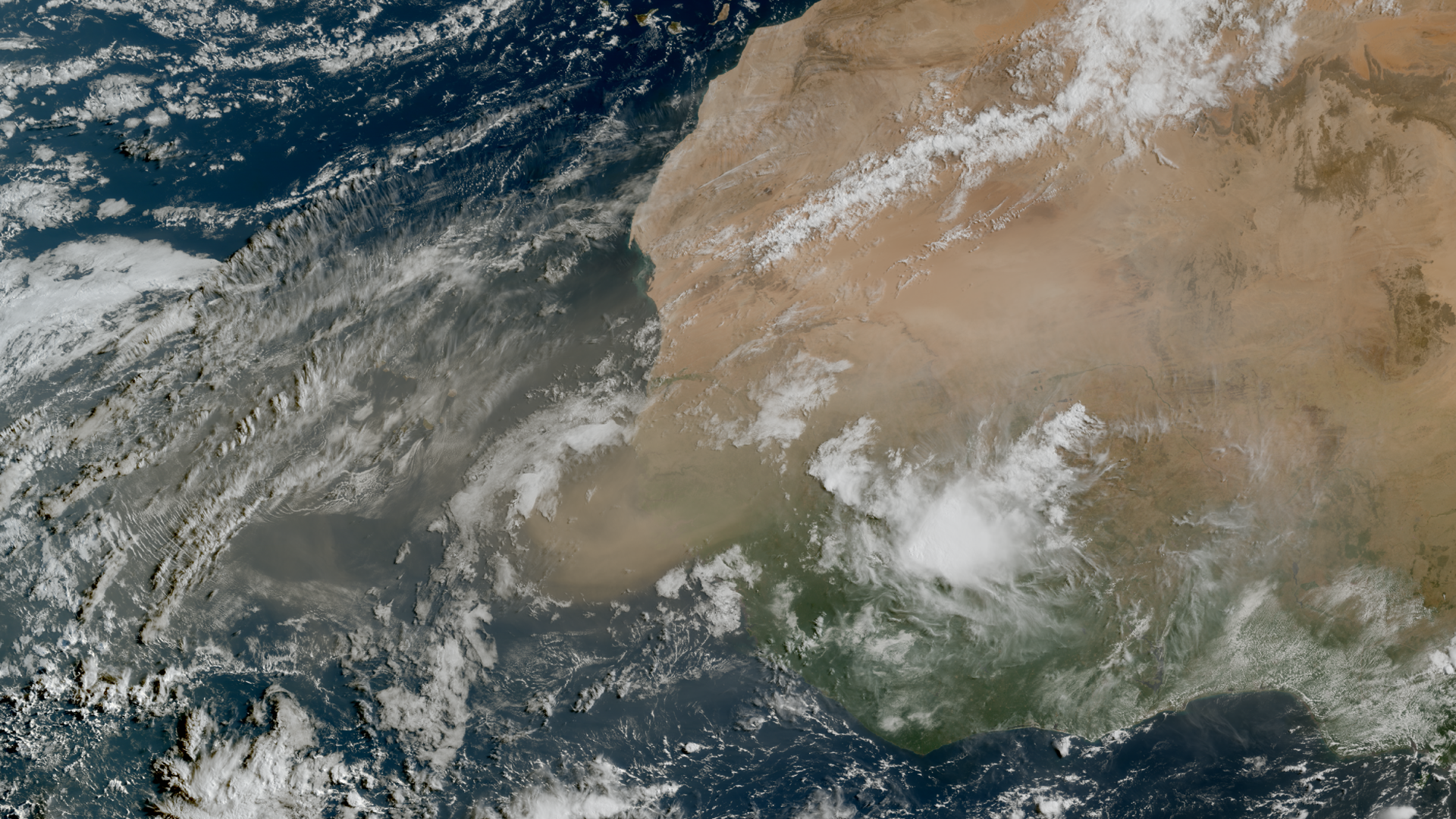
Image of the week: Saharan dust from space
Watching our Earth from space

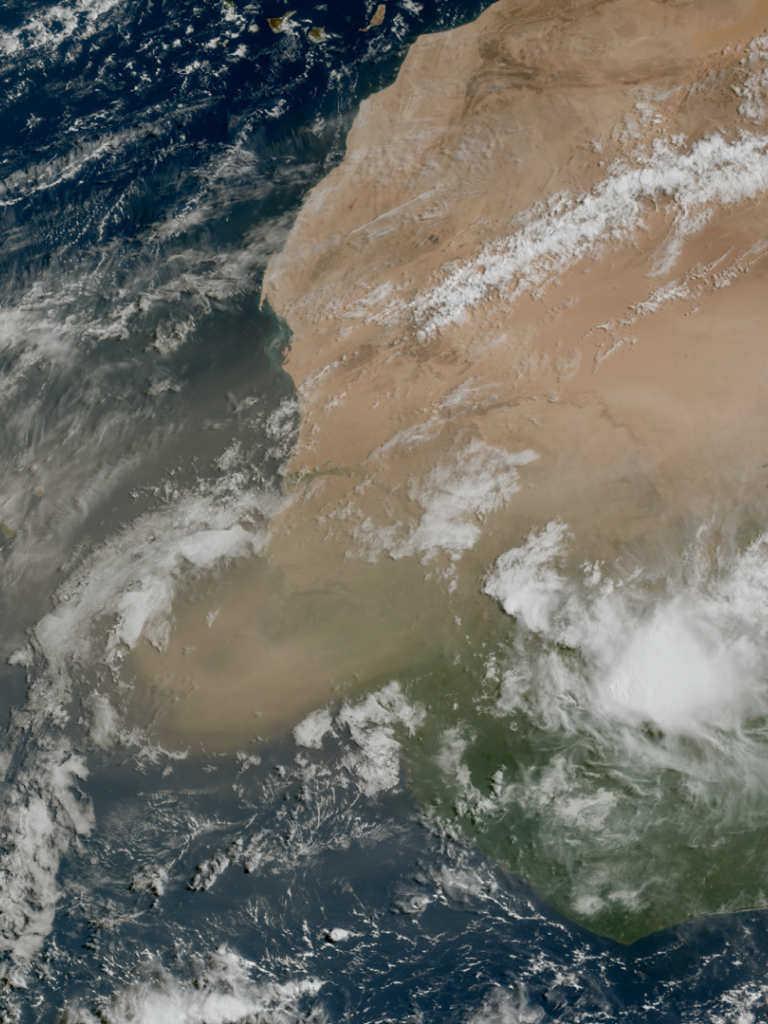
This week’s image is of Saharan dust moving west out over the Atlantic Ocean near the Cape Verde islands - as seen from the Meteosat-12 geostationary weather satellite 36,000km above the Earth.
Saharan dust particles are lifted into the atmosphere by gusts of surface wind and can be transported and deposited thousands of kilometres away.
When dust travels over populated areas, it can reduce air quality and impact health by causing respiratory problems and cause flight delays.
Over the oceans, dust can act as a fertiliser, stimulating blooms of tiny marine plants (phytoplankton) that are the basis for the marine food chain.
The latest imagery from Meteosat-12 can be accessed on EUMETView.

Dust image
This image was captured by the FCI instrument onboard Meteosat-12 on 7 May 2025.
The Meteosat weather satellites provide imagery for the early detection of fast-developing severe weather, weather forecasting and climate monitoring.
More info
Access Meteosat-12 imagery
Learn more about Meteosat Third Generation satellites
Access atmospheric data from EUMETSAT User Portal
Learn more about monitoring dust and aerosols from space
Access Copernicus atmosphere service
WMO Barcelona Dust Regional Center



